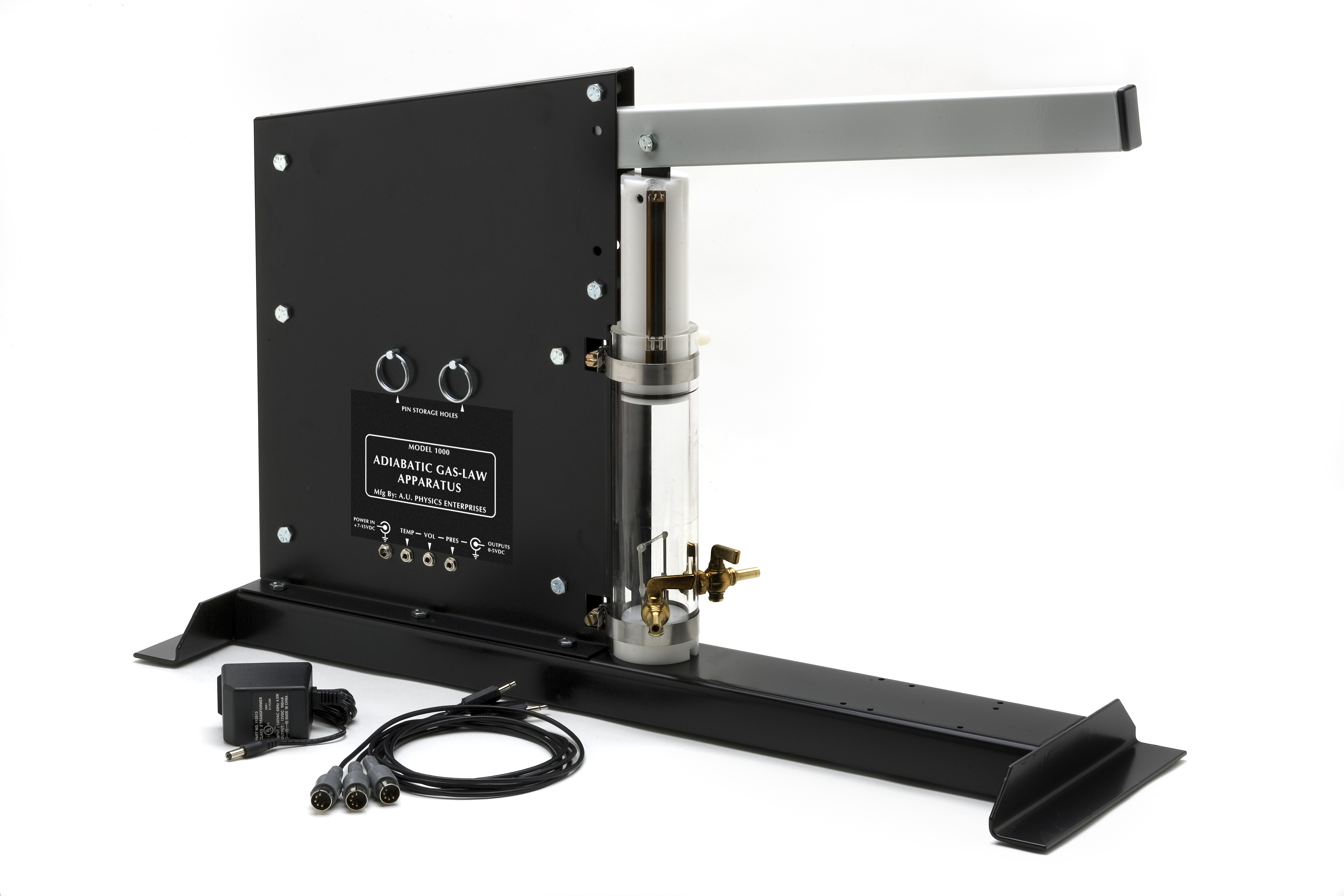Adiabatic Gas Law Apparatus

Watch product demonstration Here
Check our lab manual
Introduction
The Adiabatic Gas Law Apparatus is used to investigate the compression and expansion of gases, either rapidly under near adiabatic conditions or slowly under isothermal conditions with direct measurement of pressure, volume, and temperature.
How It Works
Sensitive transducers in the setup measure the pressure, volume, and temperature of the gas as the gas is compressed or expanded rapidly under near adiabatic conditions, or slowly under isothermal conditions. Analog signals from the sensors are monitored by a three channel analog-to-digital data acquisition system that is capable of collecting at least 500 data points per second in each channel simultaneously. The interface connects to a computer workstation with the data acquisition program, Data Monitor, that can plot graphs of pressure, volume, and temperature.
Features
- Compare the final pressure and temperature with values predicted by the Adiabatic Gas Law
- Measure the work done on the gas and compare it to the change in internal energy and the theoretical work performed
- Measure gamma: the ratio of specific heats for the gas (Cp/Cv)
- Use monatomic, diatomic and polyatomic gases to determine the effects of molecular structure on gamma
- Investigate isothermal compression and expansion by performing the experiment slowly, in incremental steps
Transducer Features
-
Pressure Sensor: A solid-state, piezoresistive device that forms part of a bridge circuit is mounted at the base of the cylinder.
-
Volume Sensor: A linear potential divider is mounted on the side of the piston. A 5-Volt source from the computer is applied across the potentiometer element. The voltage from the commutator brush on the cylinder is used to indicate the position of the piston and the volume of the confined gas.
-
Temperature Sensor: Mounted in the cylinder on the top of the base. The active element is fine nickel wire with a high surface-to-mass ratio. The wire's temperature and resistance change rapidly as the gas compresses or expands.
Includes
- Adiabatic Gas Law Apparatus
- Signal Cables 3.5mm plug into 5-pin DIN
- Power Adapter 9V DC @ 1A
- Manual
Requires
- A computer with an interface that will accept three analog signals simultaneously via 5 or 8-pin DIN connectors (e.g. PASCO's ScienceWorkshop, LabPro from Vernier Software & Technology, or LabView from National Instruments)
Recommended
- Gases: argon (monatomic), air or nitrogen (diatomic), carbon dioxide (triatomic)
Purchase through
Downloads
In case of further questions, please, contact us.

